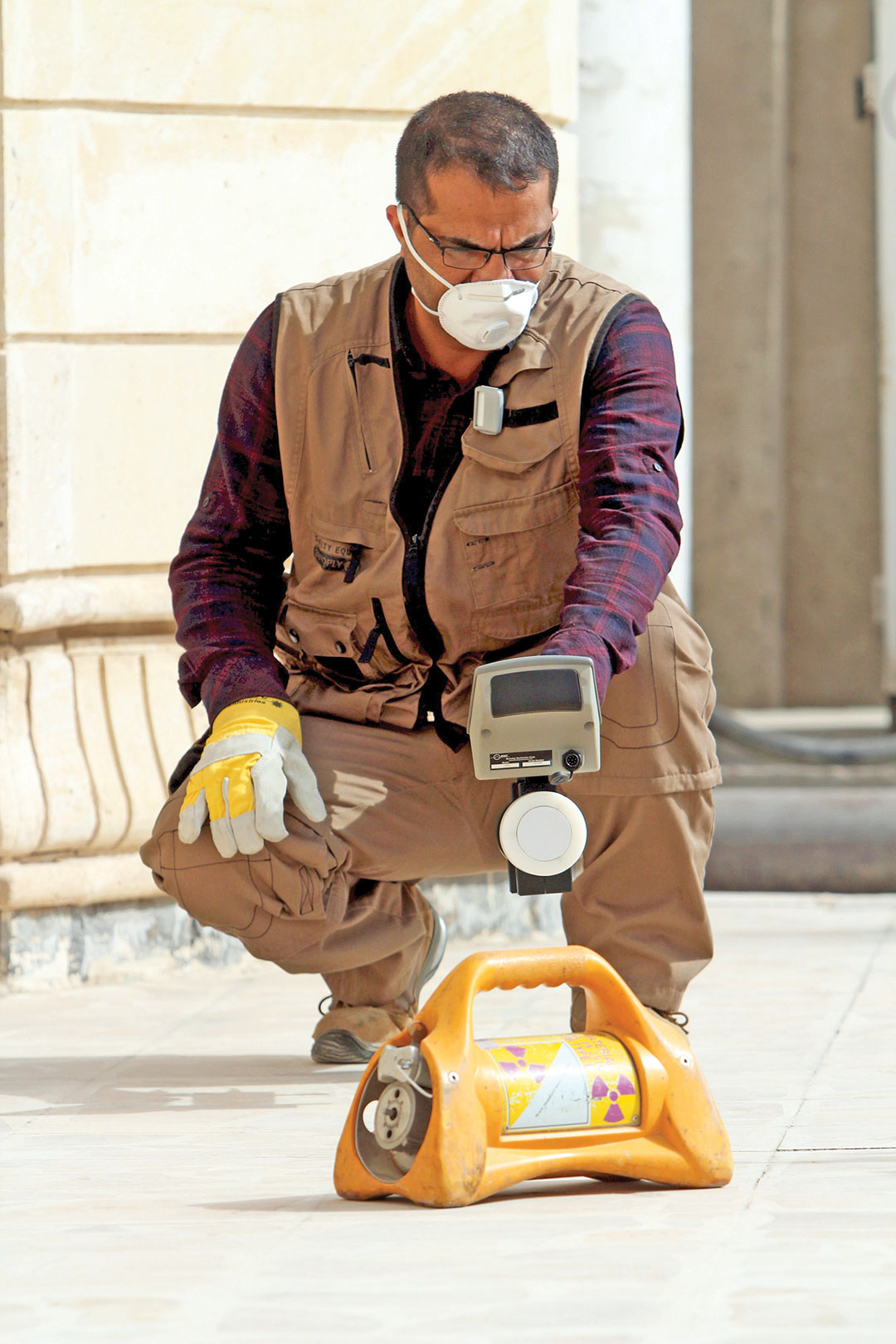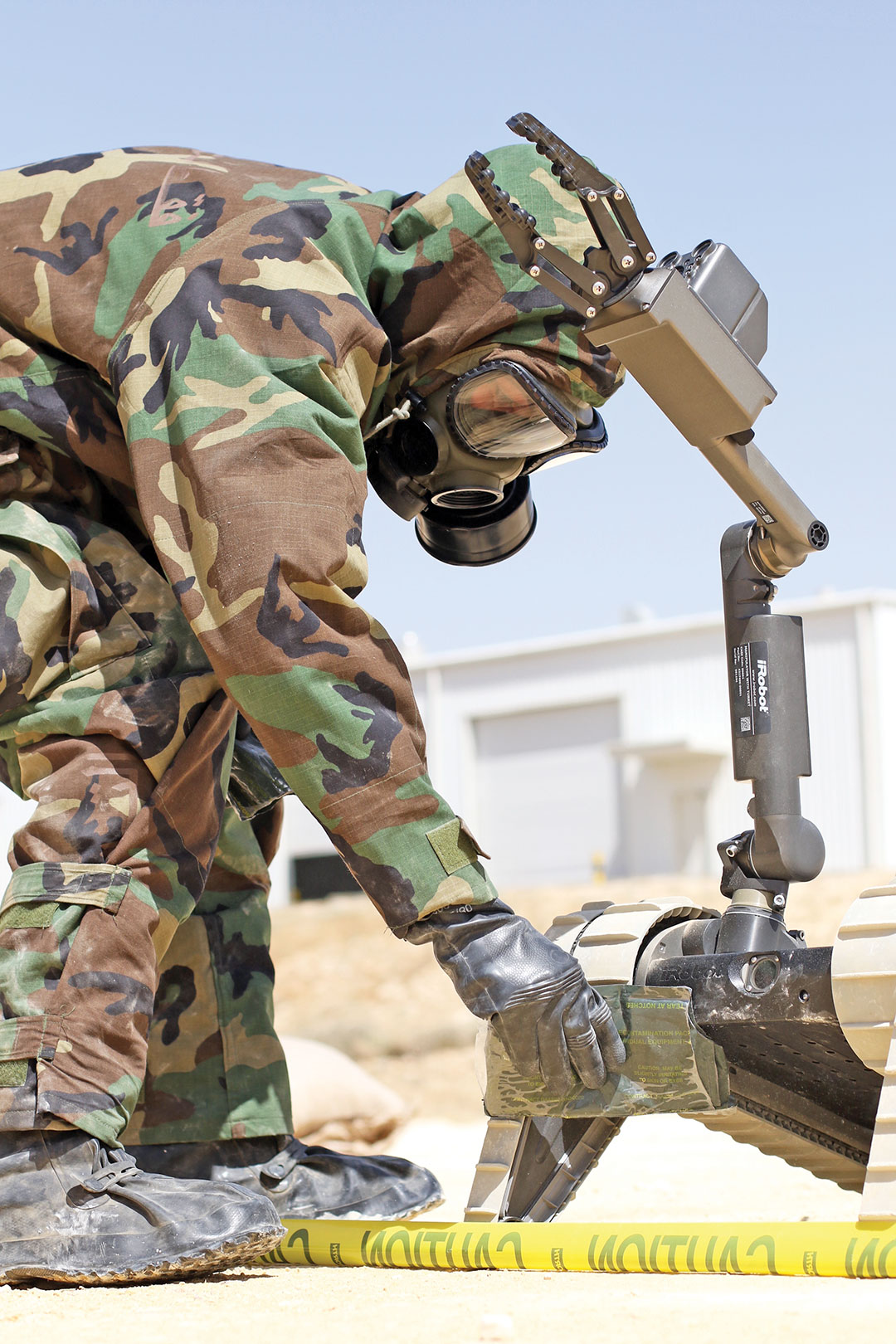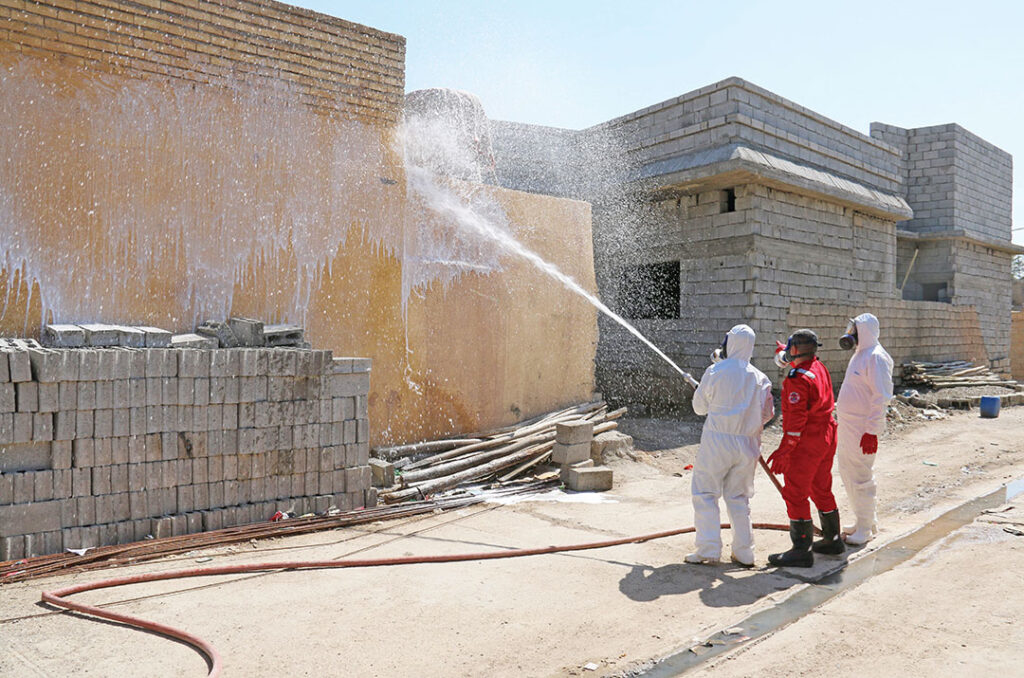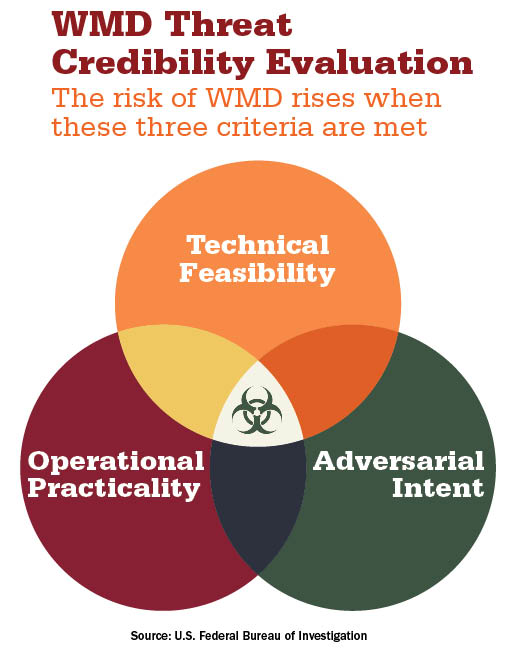UNIPATH STAFF
Among the many cruelties Daesh inflicted on Iraq, terrorists bombarded the town of Taza near Kirkuk in 2016 using crudely constructed artillery shells and rockets laced with mustard and chlorine gas. Of the 45,000 inhabitants of Taza, 1,800 were accounted casualties of these forbidden weapons, many suffering from blistered skin and lungs.
Daesh’s dalliance with weapons of mass destruction (WMD) — terrorists also tried to wield radiological dirty bombs from nuclear material pilfered from hospitals and research labs — provided a blunt warning to security officials in the Middle East about the larger threat to the region.
Military officers, border guards, police commanders, scientists and administrators tasked with countering WMD formed the training audience for the 4th Middle East and Gulf Cooperation Council Regional Counter Weapons of Mass Destruction Symposium.
The July 2022 symposium held in Garmisch-Partenkirchen, Germany, combined lectures with desktop training led by WMD experts. It attracted about 75 attendees from 11 Middle Eastern countries: Bahrain, Egypt, Iraq, Jordan, Kuwait, Lebanon, Oman, Qatar, Saudi Arabia, the United Arab Emirates and Yemen.
The symposium sought to boost countries’ effectiveness in countering WMD through strengthened border security, intelligence-based risk assessments, and improvements in legal and bureaucratic procedures to streamline national response to such threats.
Preempting any chemical, biological, nuclear or radiological attack was the stated goal of the attendees. As one senior Iraqi military officer said in recounting the aftereffects of the Daesh mustard gas attacks:
“I don’t want to reach the response phase. I want to prevent attacks.”

The looming threat
Yet much of the world is ill-prepared to detect and deflect WMD threats. No single country can marshal all the resources necessary to tackle weapons that in some cases can be produced in garages and bathrooms using how-to manuals on the internet. The deficiencies are many:
International land and sea borders remain largely porous and prone to smuggling.
Forms of uranium used for illicit devices are hard to detect with radiation sensors. Most interdictions result from perceptive, quick-thinking border guards and customs officers.
The COVID-19 pandemic highlighted the failure of international health regulations to stem the release and spread of dangerous pathogens.
Dual-use biological and chemical agents — those with applications both peaceful and malign — are poorly regulated. Close to 95% of countries have no laws to prevent their use for nefarious purposes.
WMD threats develop and adapt faster than the ability of governmental organizations to keep pace.
Up to this point, the world has been fortunate. Attempts at radiological attacks — including Daesh’s seizure of radiological samples from hospitals and research labs during the occupation of Mosul — never reached fruition. The release of weaponized sarin gas in a Japanese subway and anthrax-contaminated mail in the United States were two of the worst non-military-style terrorist WMD attacks.
But the emergence of well-funded terrorist groups — some state sponsored — and the adoption of cheap and widely available delivery devices like drones have increased a sense of urgency among security officials. Adding to the unease, regimes such as North Korea’s release videos suggesting nuclear weapons are a legitimate tool of state coercion.
For a criminal trying to smuggle a chemical, biological or radiological agent across borders, the rewards often outweigh the risks. One Lebanese general recalled how narcotics traffickers disguised drugs as pomegranates packed in crates. “If you can smuggle narcotics in pomegranates, you can smuggle anything,” he warned.

Containment through cooperation
Presenters at the counter WMD symposium promoted a three-tiered approach to the chemical, biological, radiological and nuclear weapons threat: prevention, protection and response. Prevention — including improved border security — absorbed much of the focus of the conference.
Countries were urged to conduct threat and risk assessments for each category of WMD. Do criminals and terrorists have the means to acquire such dangerous materials? Do they possess the technical expertise to weaponize them? Does the use of such weapons correspond to their ideologies and intentions?
A Jordanian biological weapons expert vouched for a combination of export controls, licensing, diplomacy and interdictions to prevent WMD from falling into the wrong hands. Nevertheless, even if governments approve legislation to restrict the haphazard dissemination of biological agents, national agencies must possess the legal authority to enforce such controls.
In the realm of chemical weapons, the Iraqi Pharmacist Syndicate, a professional organization, has embarked upon a mission of licensing its members, building databases of dangerous chemicals and tracking their consumption. Iraqis noted that the country’s 23 border crossings exacerbate the problem of tracking the movement of dangerous materials across international boundaries.
The Lebanese Armed Forces (LAF) contend with a similar problem. Lebanese troops have assumed policing responsibility for the country’s volatile eastern and northern borders with Syria. The country also maintains nine coastal surveillance stations.
To prepare Soldiers for the task, Lebanon operates a Land Border Regiments’ Training School with financial support from the Netherlands. With the aid of the U.S. Defense Threat Reduction Agency’s Weapons of Mass Destruction Proliferation Prevention Program, LAF has brought improved training and technology to bear on the border.
Two elements of the U.S. military have also done significant work in helping Middle Eastern partners improve their performance against the WMD threat.
U.S. Central Command’s J5-CWMD Division conducts dozens of training sessions a year in support of partners across the region and capitalizes on a range of military and civilian organizations to assist in those efforts. One key resource is the U.S. Army Chemical, Biological, Radiological, Nuclear (CBRN) School. International officers and noncommissioned officers have benefited from on-site training and gone on to serve heroically in their home countries.
Scott Kimmel, a retired U.S. Army colonel and chemical officer who serves as deputy commandant of the CBRN school, said preparation is often the best deterrence.
To that end, Kimmel and his colleagues are focusing on technology and digitalization to accelerate analysis of suspicious substances. Robots as first responders can eliminate potential exposure of troops to toxins.
“We must remove the operators from the hazards,” Kimmel told the symposium audience.
Training at the symposium
For purposes of testing concepts featured at the symposium, attendees broke into eight groups, each focused on a specific WMD threat. The exercise forced these multinational task forces to coordinate regionally in the face of potential chemical, biological, radiological and nuclear hazards.
The setting was three fictional countries whose terrain and seacoasts resembled those of the Middle East. A clandestine shipment of hazardous material from North Korea launched the scenario. To stave off disaster, the multinational teams conducted a variety of tasks: mobilizing troops, deploying hazardous materials squads, alerting international organizations, ordering naval interdictions and coordinating messaging to the public.
Over one large conference table, a Lebanese general responsible for border security, a Saudi senior military commander, an Egyptian colonel and a Jordanian military CBRN expert hashed out a response. Rounding out the team was a Qatari general, an Omani company commander and an Iraqi scientist whose specialty was countering chemical weapons proliferation.
Despite differences in military doctrine, governmental organization and legal systems in their home countries, the task forces completed their assignments to the praise of conference organizers.
“It’s encouraging to see all these countries come together, capitalize on each other’s technical expertise, and then formulate a plan,” said Jon Drushal, a retired U.S. Army colonel and chemical officer who leads U.S. Central Command’s Partner Nation Capacity Branch.
Terror in a Test Tube Potential Biological Weapons
- Enhancing biological agent or toxin
- Disrupting immunity or effectiveness of immunization
- Conferring resistance to biological agent to skirt detection and prevention
- Increasing stability or transmissibility of biological agent
- Altering genetics of biological agent to widen host types (plant virus altered to infect animals, etc.)
- Enhancing susceptibility of host population
- Generating novel biological agents or reconstituting extinct microbes.
Useful Resources
U.S. Central Command Partner Nation Capacity Branch: Operated under CENTCOM’s strategy, policy and plans directorate, its mission is to help partner nations thwart WMD.
U.S. Army Chemical, Biological, Radiological, Nuclear (CBRN) School: Based at Fort Leonard Wood in Missouri in the United States, the school invites Soldiers from across the world to attend courses in CBRN defense.
U.S. Defense Threat Reduction Agency: DTRA’s Weapons of Mass Destruction Proliferation Prevention Program sponsors programs focused on border security and WMD detection to stop the spread of these dangerous weapons.
International Atomic Energy Agency: The Vienna-based organization works with countries to promote safe, secure and peaceful use of nuclear technology. Its Incident and Emergency Centre offers a team of experts to address potential nuclear emergencies.
Interpol: Based in Lyon, France, this international police agency maintains a massive global database of known criminals and their crimes.


